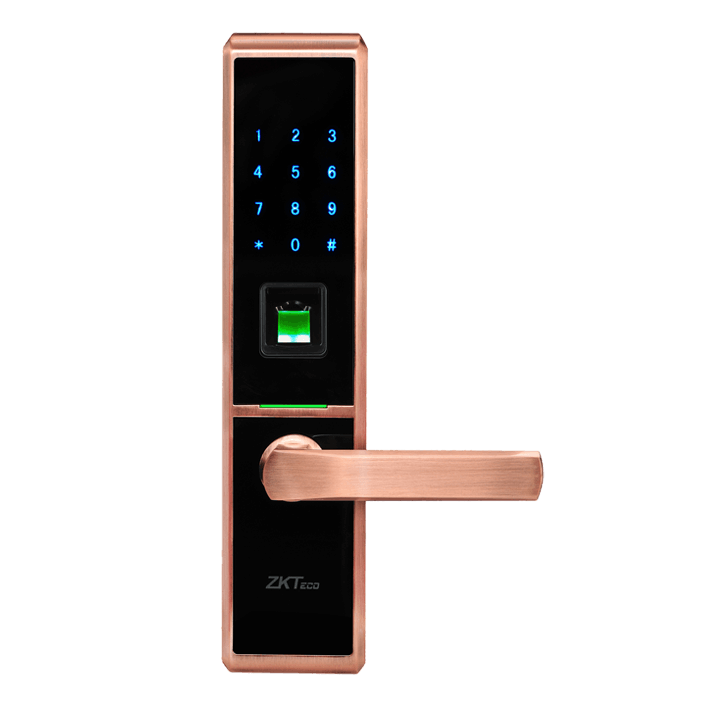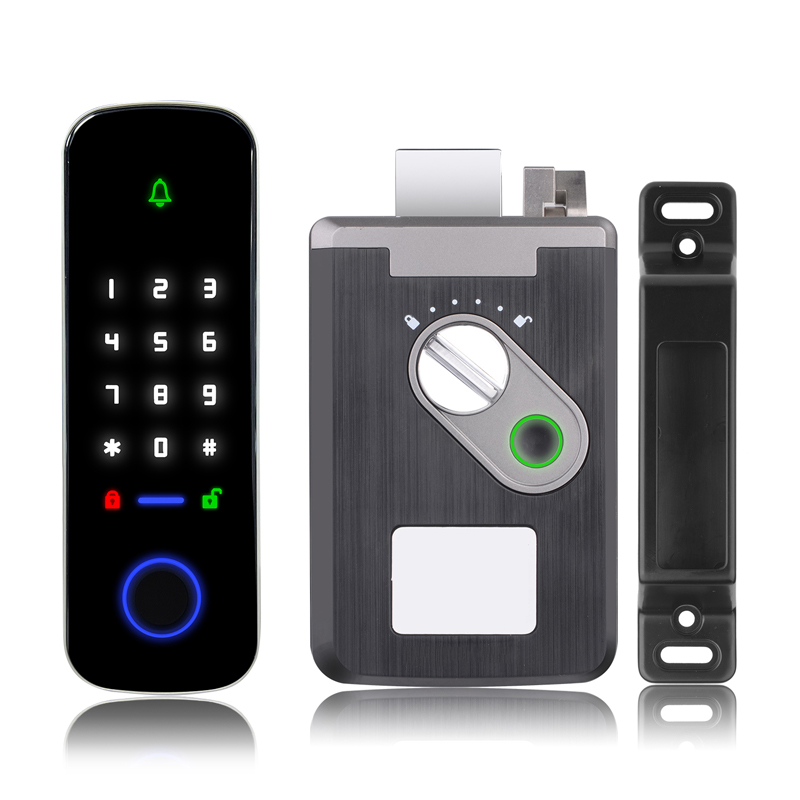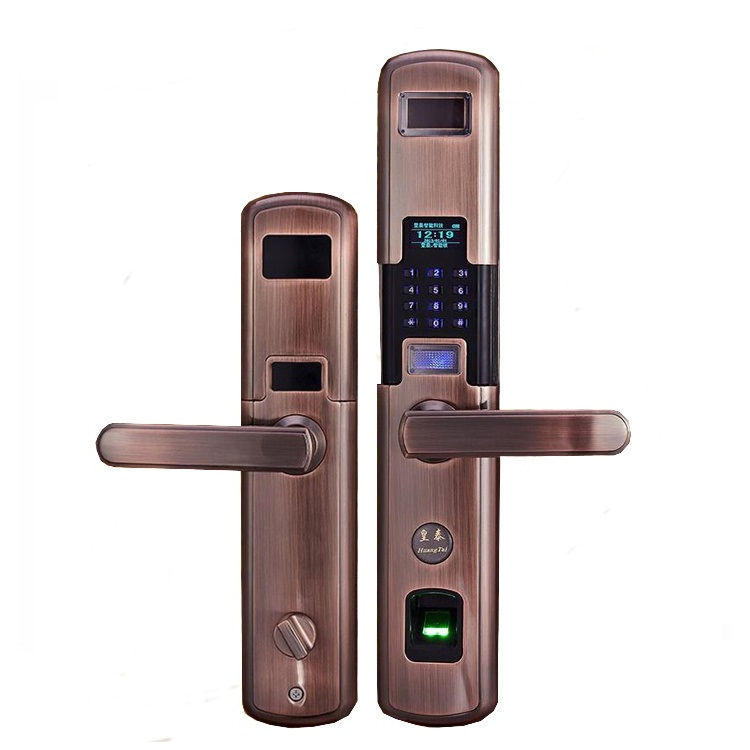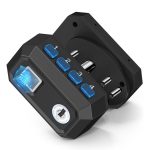In today’s world, security concerns are increasingly paramount. With the rise in crime rates and the advancement of technology, homeowners seek effective solutions. One of the most revolutionary innovations in security is the fingerprint door lock system. This advanced technology not only promises enhanced safety but also offers convenience and efficiency for users. By utilizing unique biometric data, fingerprint locks provide a level of protection that traditional locks simply cannot match. Furthermore, with the seamless integration of modern technology, these locks are transforming how we approach security in our homes and businesses.
Understanding Fingerprint Door Lock Systems
Fingerprint door lock systems operate on biometric recognition. Biometric technology relies on the unique characteristics of individuals, specifically their fingerprints. Each person possesses distinct fingerprint patterns, which serve as the foundation for this system. When a user approaches the lock, their fingerprint is scanned and compared against a stored database. If there is a match, the lock opens. Such technology eliminates the need for traditional keys, reducing vulnerability to unauthorized access.
How Biometrics Enhance Security
Biometric systems are becoming increasingly popular in security applications. Unlike keys, fingerprints are unique and cannot be easily duplicated. This uniqueness drastically reduces the likelihood of unauthorized access. Moreover, biometric data is stored digitally, making it much harder to intercept or replicate. Additionally, fingerprint door locks often come with encryption technology, providing an additional layer of protection. As a result, users can enjoy peace of mind knowing that their homes are secured with one of the most advanced technologies available.
Convenience of Keyless Entry
Another major advantage of fingerprint door lock systems is convenience. They eliminate the need for physical keys, which can be lost or stolen. Imagine arriving home with your hands full and not needing to fumble for a key. Instead, you simply place your finger on the scanner, and the door unlocks automatically. This hands-free access is particularly useful for families with children or those carrying groceries. Consequently, users find themselves enjoying a more seamless entry experience, thereby enhancing daily routines.

Types of Fingerprint Door Lock Systems
There are various types of fingerprint door lock systems available on the market today. They differ based on features, pricing, and design. Buyers can choose between high-end models, which offer advanced functionalities, and more basic versions, which often focus on essential features. Understanding these differences is crucial when selecting the right lock for your needs.
Standalone vs. Networked Systems
Fingerprint door locks can be classified as standalone or networked systems. Standalone systems operate independently, storing data on the lock itself. Users typically register fingerprints directly through the lock’s interface. This setup eliminates dependency on external devices, providing a simpler solution for individual households. On the other hand, networked systems connect to a central database. They are ideal for businesses that require consistent monitoring. Administrators can manage access permissions remotely, allowing for more flexible control.
Additional Features to Consider
When selecting a fingerprint door lock system, additional features can add convenience and security. For instance, many models come equipped with keypads. Users can enter a pin code as a backup option. This feature ensures access even if the fingerprint sensor malfunctions. Furthermore, some systems allow multiple fingerprints to be registered. This capability is especially beneficial for families, as everyone can have personalized access. Additionally, features such as alarm systems can deter potential intruders.
Installation and Maintenance
Installing a fingerprint door lock system may seem daunting, but it can often be a straightforward process. Most systems come with detailed instructions for installation. However, it is advisable to consult a professional for optimal results. Proper installation ensures functionality and security, which are crucial for any safety system.
DIY Installation Options
Many manufacturers design fingerprint door locks for DIY installation. They typically include a comprehensive manual with illustrations. As a result, homeowners can easily follow the steps to complete the installation. This process generally requires standard tools like a screwdriver and drill. Importantly, ensure the chosen location for the lock is appropriate and secure. Proper alignment and placement can significantly influence the performance of the system.
Regular Maintenance for Longevity
Once installed, regular maintenance is essential for the longevity of any fingerprint door lock system. This maintenance includes cleaning the fingerprint scanner to remove dust or grime. Over time, such debris can hinder the device’s ability to read fingerprints accurately. In addition, users should routinely check the lock’s battery life. Many systems run on batteries, and low battery warnings are usually displayed on the interface. Maintaining optimal conditions ensures that the lock remains functional and secure.

Addressing Common Misconceptions
Despite their increasing popularity, many misconceptions surrounding fingerprint door lock systems still exist. Understanding these myths can help consumers make informed decisions regarding their security needs.
Myth: Fingerprint Scanners Can Be Easily Fooled
One prevalent myth is that fingerprint scanners can be easily fooled. On the contrary, many advanced models incorporate sophisticated algorithms. These algorithms use 3D imaging to analyze the depth and texture of fingerprints. This complexity makes it incredibly difficult to replicate a fingerprint accurately. Therefore, the likelihood of unauthorized access through deceitful means remains extremely low.
Myth: Fingerprint Locks Are Not Reliable
Another misconception involves the reliability of these locks. Some individuals question whether fingerprint locks can fail, particularly in extreme weather conditions. While it is true that some environmental factors can impact performance, modern systems are designed to withstand various conditions. Many operate effectively in temperatures ranging from extremely cold to moderately hot climates. Furthermore, reliable manufacturers routinely conduct rigorous testing on their products. As a result, consumers can feel confident in the effectiveness of well-reviewed fingerprint door lock systems.
Cost Considerations
When investing in a fingerprint door lock system, cost is an important factor. The price can range widely based on features, technology, and brand reputation. Understanding the relationship between cost and features allows consumers to make better choices.
Budget-Friendly Options
There are budget-friendly fingerprint lock systems available without sacrificing essential security features. These models focus on basic functionalities, making them accessible for most households. Typically, they offer simple fingerprint scanning capabilities without additional frills. However, it’s important to research the reliability and customer reviews of these locks before making a purchase. Affordable options can still provide effective security when chosen carefully.
Premium Models and Features
For those willing to invest more, premium fingerprint door locks offer additional features and enhanced security. These models often come with advanced encryption and integration capabilities. Some may even provide smart home compatibility, allowing users to control locks remotely through mobile apps. Moreover, premium locks usually feature robust construction materials, increasing durability. Investing in quality may provide a higher level of security, ultimately offering better value over time.

Conclusion: A Safe Future Awaits
In summary, fingerprint door lock systems represent an innovative leap in security technology. Their ability to enhance safety through biometric recognition is unmatched. Furthermore, the convenience of keyless entry simplifies life for countless individuals. As a result, more homeowners and businesses are likely to adopt this technology to secure their spaces.
Understanding the types of systems available, installation techniques, and cost considerations empowers consumers. Armed with this knowledge, users can make informed choices regarding their security needs. Moreover, they can dispel common myths that may deter them from exploring such solutions. Ultimately, fingerprint door lock systems present a promising future for security, combining technology with practicality. As advancements continue, we can expect even greater innovations to enhance our safety processes.
With these locks in place, individuals can embrace peace of mind. After all, securing our homes and businesses is a vital task. Investing in a fingerprint door lock system can provide a reliable and efficient solution that stands the test of time. Embrace the power of biometric security today.
Now is the time to consider upgrading your security. Explore the vast range of fingerprint door lock systems available. You may find that the next step toward a safer home is merely a fingerprint away.


